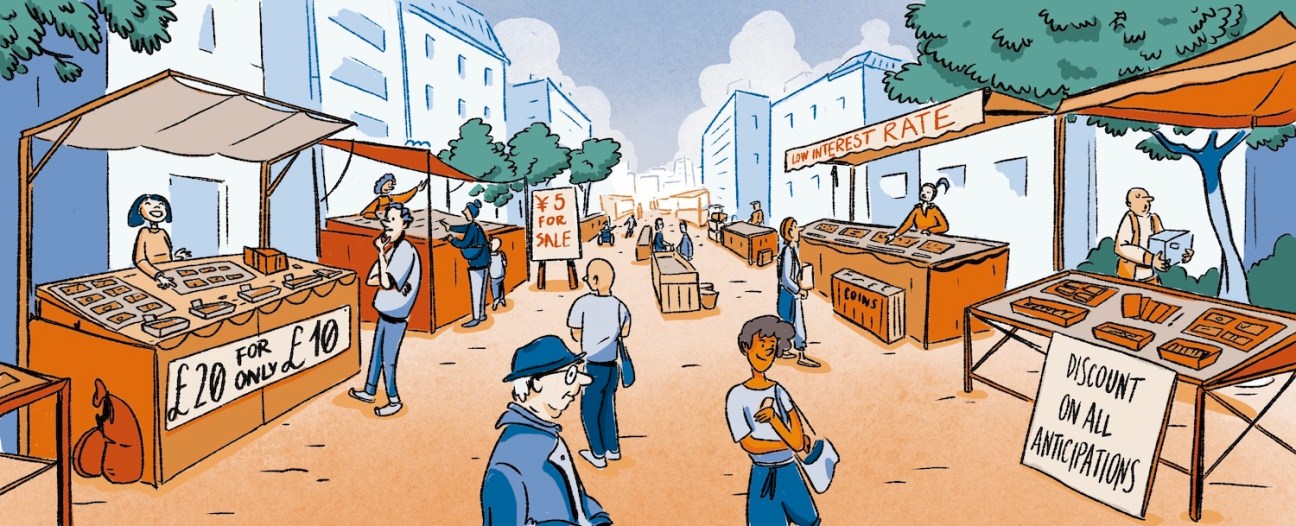Five important ways the time value of money is shaping the world
From dizzying highs to crashing lows, the cycle of speculative financial gain and putative returns continues t0 shape our economies with an invention tied to that most enduring of currencies: time
During the past decade, interest rates were taken to their lowest level in history. Central banks maintained their policy rates at close to zero for a prolonged period in the US and UK. In Europe and Japan, short-term interest rates turned negative for the first time. In my view this great monetary experiment was a mistake of the first order, whose unhappy consequences we will be living with for years to come.
First, some background
We have data on interest rates going back more than 5,000 years. There was a lot of criticism of usury in the Ancient World because high debt burdens resulted in debtors losing their properties and even their freedom. Greek philosopher Aristotle claimed that interest was unjust because, as he wrote, “money was intended to be used in exchange but not to increase at interest”. What’s lacking in this comment is the factor of time: loans are made for a certain period. The Yale School of Management faculty director and economic historian William Goetzmann describes interest as the most important invention in the history of finance as it enabled people to transact for a period of time. Interest is the price of time.
The importance of time in economic affairs was best expressed in an aphorism attributed to Benjamin Franklin: “Time is precious. Time is money. Time is the stuff of which life is made.” Franklin’s contemporary, 18th-century French economist Anne-Robert-Jacques Turgot argued that people were impatient – “a bird in the hand is worth two in the bush,” he wrote. Thus, a sum of money today and the same sum in the future couldn’t have the same value. For Turgot, interest is the price given for the use of a certain quantity of value during a certain time. The time value of money exists in all societies and economies. It is especially important for a market-based or capitalist system.

The time value of money shapes the world. Here’s how:
1.
Valuation
Interest in the form of a discount or capitalisation rate is essential to every act of valuation. What we call capital is a future stream of income that is discounted (using a discount or capitalisation rate) to arrive at a current value. Without this, an apple in a 100 years’ time would be worth the same as an apple today. As John Law, the Scottish-born gambler and economist, wrote in the early 18th century, “anticipation is always at a discount. £100 to be paid now is of more value than £1,000 to be paid £10 a year for 100 years.” Law founded France’s first national bank while assembling a business enterprise, known as the Mississippi Company. He conducted an experiment, substituting paper money for gold and silver, and issuing new banknotes to bring interest rates down. As rates fell to 2 per cent, the price of the Mississippi stock soared. Alas, Law’s Scheme failed. His experiment fuelled inflation, confidence in his system was lost, and Law’s paper money was withdrawn. Every great speculative bubble has occurred during periods of “easy money”. In 2020/21, when interest rates were stuck at zero and central banks were printing trillions to buy securities, the “Everything Bubble” – stocks, real estate, contemporary art and vintage cars – entered its last phase.
2.
Production
The level of interest influences the length of production processes or the “payback period” for new investments. When interest rates are high, investors demand a quick payback and, when low, a longer payback. Interest encourages us to economise on scarce resources, spurring efficiency gains and profits. The ultra-low interest rates of recent years thwarted the process of creative destruction, slowing the tempo of production. With interest rates stuck at zero for many years, we witnessed the appearance of so-called zombie companies – inefficient firms kept alive on the drip of easy money. Low interest rates also stimulated investment in businesses with distant cash flows, such as venture capital. When rates were stuck at zero, capital flowed indiscriminately into Silicon Valley, which financed ever more preposterous businesses – autonomous cars, space tourism and dubious crypto ventures.
3.
Risk-taking
Interest was described by Ferdinando Galiani, an 18th-century philosopher, as the “price of anxiety” or the price of risk. Galiani reasoned that lending produces anxiety in the part of lenders which must be compensated. Put another way, interest can be seen as an insurance premium received by the creditor against the risk of loss. What we find is that low rates offered an inadequate protection against loss. Easy money encouraged “yield-chasing” by investors, accompanied by a widespread decline in underwriting standards. Interest is also the cost of leverage. As the interest rates fell, governments and companies took on more debt. Government debt levels around the world have soared since u2008. Ultra-low rates spurred companies to use debt to enhance returns whether buying back shares (rather than investing) or acquiring other companies. Leveraged buyouts and mergers proliferated. As a result, global debt levels are higher than at the time of the financial crisis.
4.
Saving
Interest has been described as a “reward of abstinence” – an inducement to save. Interest compounds savings, enabling us to retire at some stage. Low rates punished savers – what the former German finance minister Wolfgang Schäuble called “Strafzinsen” (penalty or negative rates). Without an inducement, saving rates in the UK and the US declined far below their historic averages. Low rates also contributed to the ongoing pensions crisis.
5.
Inflation
Central bankers view interest rates as a policy lever to control inflation. During the pandemic, their fixation with falling prices kept rates at zero while expanding the money supply. After 2020, inflation suddenly reappeared and central bankers called time on the era of zero and negative rates. Renowned US hedge-fund manager Seth Klarman called it “The Great Reset”. During 2022 some $30trn (€28trn) was wiped off global bond and stock markets. The most speculative stocks dropped by 90 per cent or more. Early last year a regional banking crisis broke out in the US as several banks suffered losses on bond-holdings. Venture-capital investments started to trade at substantial discounts to appraised value. Private equity, which had been paying record multiples for buyouts, and piling on nosebleed leverage, ran into trouble. Last year the IMF observed the weakest economic growth in 30 years.
The excesses of the easy money era have still not been fully expunged from the system. The US stock market has bounced back to a new peak and a mania relating to anything that AI has taken hold. Cryptocurrencies – a barometer of speculation – rebounded. US stocks are currently more expensive than they were at their 1929 highs.
Housing markets from Shanghai to Stockholm have also started to deflate. China’s largest real-estate developers have failed and problems are beginning to appear in the country’s shadow banking system. Bloomberg reports that property stress in Asia is brewing in countries such as South Korea, Indonesia, Vietnam, Hong Kong and Australia. Commercial real-estate problems are also percolating. Austrian group Signa has gone bust with €5bn of debt. In the US, some $2.2trn (€2.06trn) of commercial mortgages are also due in the next few years.
Highly leveraged companies, including the UK utility Thames Water and French telecoms group Altice, are struggling. Interest-rate caps and loan extensions that protected companies from the effect of rising rates are running off.
Zombie companies are also under strain, especially small companies that lack access to the debt markets. The Wall Street Journal reports that bankruptcies have surged among private organisations in the US. Public finances are also stressed: Washington now spends more on debt-servicing than on defence. The US economy grew last year thanks to an unsustainably large fiscal deficit (about 6 per cent of GDP).
Markets have been buoyed by excess liquidity from pandemic-era stimulus programs. This is running dry and many commentators expect bullish financial conditions to continue. Yet, after great bubbles, soft landings are rare. Investors would do well to remember Milton Friedman’s comment that monetary policy operates with a “long and variable lag”.
About the writer: Chancellor is an award-winning financial historian and the author of ‘The Price of Time: The Real Story of Interest’, published by Penguin.


